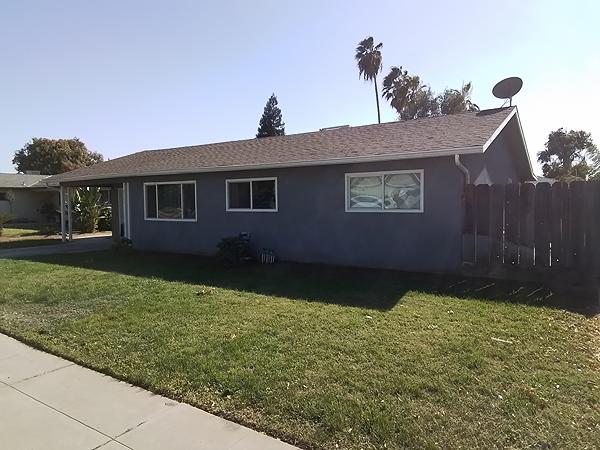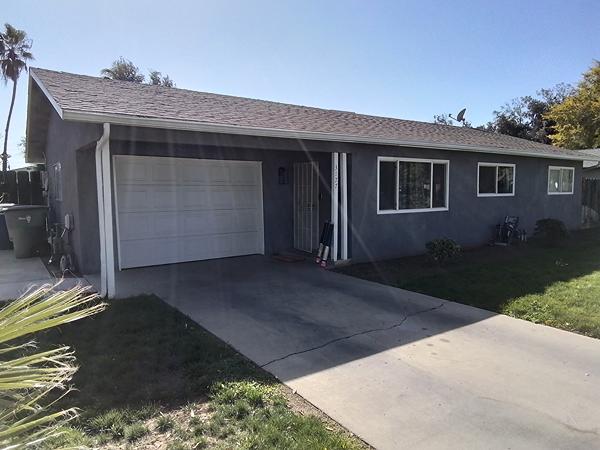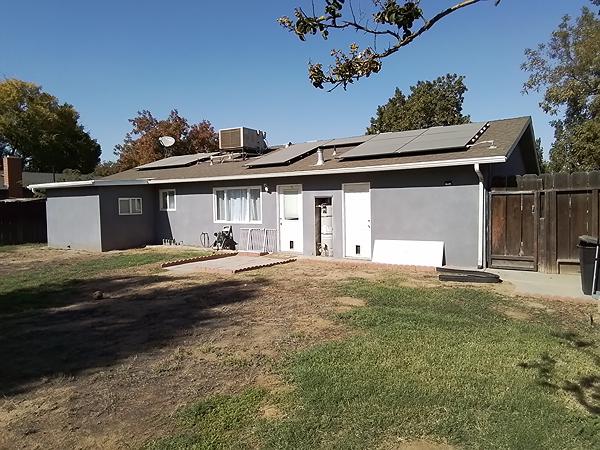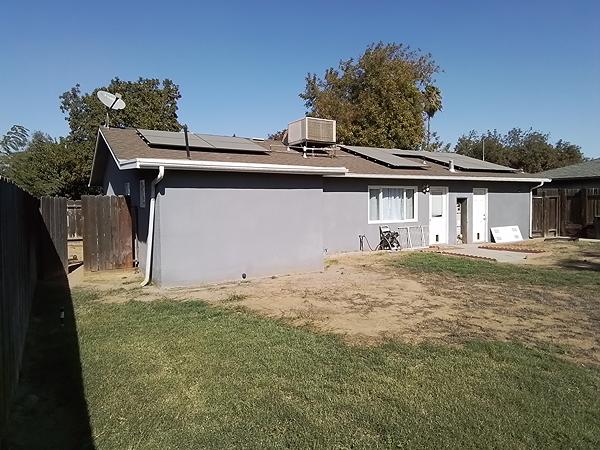Sherlock Home Inspections
(559) 696-4436
Inspector: Curt Rolff
Inspector's email: crolff4@att.net
NACHI15032712
California
California




Summary
| Client(s): | Jacques |
| Property address: | 3177 W Alamos Ave Fresno CA 93722-4006 |
| Inspection date: | Monday, October 28, 2024 |
This report published on Monday, October 28, 2024 4:21:42 PM PDT
This report is the exclusive property of Sherlock Home Inspections and the client(s) listed in the report title. Use of this report by any unauthorized persons is prohibited.
| Safety | Poses a safety hazard | |
| Repair/Replace | Recommend repairing or replacing | |
| Repair/Maintain | Recommend repair and/or maintenance | |
| Maintain | Recommend ongoing maintenance | |
| Evaluate | Recommend evaluation by a specialist | |
| Monitor | Recommend monitoring in the future | |
| Serviceable | Item or component is in serviceable condition | |
| Comment | For your information |
Grounds
2) 
 Cracks, holes, settlement, heaving and/or deterioration resulting in trip hazards were found in the driveway, For safety reasons, recommend that a qualified contractor repair as necessary.
Cracks, holes, settlement, heaving and/or deterioration resulting in trip hazards were found in the driveway, For safety reasons, recommend that a qualified contractor repair as necessary.
3) 
 Cracks, holes, settlement, heaving and/or deterioration resulting in trip hazards were found in the sidewalks or patios. For safety reasons, recommend that a qualified contractor repair as necessary to eliminate trip hazards.
Cracks, holes, settlement, heaving and/or deterioration resulting in trip hazards were found in the sidewalks or patios. For safety reasons, recommend that a qualified contractor repair as necessary to eliminate trip hazards.
Roof
4)  Significant amounts of debris have accumulated in one or more gutters or downspouts. Gutters can overflow and cause water to come in contact with the building exterior, or water can accumulate around the foundation. This is a conducive condition for wood-destroying organisms. Recommend cleaning gutters and downspouts now and as necessary in the future.
Significant amounts of debris have accumulated in one or more gutters or downspouts. Gutters can overflow and cause water to come in contact with the building exterior, or water can accumulate around the foundation. This is a conducive condition for wood-destroying organisms. Recommend cleaning gutters and downspouts now and as necessary in the future.
Electric
7) 

 One or more electric receptacles at the kitchen and/or bathroom(s) had no visible ground fault circuit interrupter (GFCI) protection, or the inspector was unable to determine if GFCI protection was present. If not GFCI-protected, receptacles in wet areas pose a shock hazard. Recommend that a qualified electrician evaluate and install GFCI protection if necessary and per standard building practices. General guidelines for GFCI-protected receptacles include the following locations:
One or more electric receptacles at the kitchen and/or bathroom(s) had no visible ground fault circuit interrupter (GFCI) protection, or the inspector was unable to determine if GFCI protection was present. If not GFCI-protected, receptacles in wet areas pose a shock hazard. Recommend that a qualified electrician evaluate and install GFCI protection if necessary and per standard building practices. General guidelines for GFCI-protected receptacles include the following locations:
https://www.reporthost.com/?GFCI
- Outdoors (since 1973)
- Bathrooms (since 1975)
- Garages (since 1978)
- Kitchens (since 1987)
- Crawl spaces and unfinished basements (since 1990)
- Wet bar sinks (since 1993)
- Laundry and utility sinks (since 2005)
https://www.reporthost.com/?GFCI
Water Heater
9)  The hot water temperature was greater than 120 degrees Fahrenheit. This is a safety hazard due to the risk of scalding. The thermostat should be adjusted so the water temperature doesn't exceed 120 degrees. If the water heater is powered by electricity, a qualified person should perform the adjustment, since covers that expose energized equipment normally need to be removed. For more information on scalding dangers, visit:
The hot water temperature was greater than 120 degrees Fahrenheit. This is a safety hazard due to the risk of scalding. The thermostat should be adjusted so the water temperature doesn't exceed 120 degrees. If the water heater is powered by electricity, a qualified person should perform the adjustment, since covers that expose energized equipment normally need to be removed. For more information on scalding dangers, visit:
https://www.reporthost.com/?SCALD
https://www.reporthost.com/?SCALD
Heating, Ventilation and Air Condition (HVAC)
11)  One or more heating or cooling ducts in an unconditioned space (e.g. crawl space, attic or basement) were not insulated, or the insulation was damaged or deteriorated. This can result in reduced energy efficiency, moisture inside heating ducts, and/or "sweating" on cooling ducts. Recommend that a qualified person repair per standard building practices. For example, by wrapping ducts in insulation with an R-value of R-8.
One or more heating or cooling ducts in an unconditioned space (e.g. crawl space, attic or basement) were not insulated, or the insulation was damaged or deteriorated. This can result in reduced energy efficiency, moisture inside heating ducts, and/or "sweating" on cooling ducts. Recommend that a qualified person repair per standard building practices. For example, by wrapping ducts in insulation with an R-value of R-8.
12) 

 The estimated useful life for most forced air furnaces is 15-20 years. This furnace appeared to be beyond this age and/or its useful lifespan and may need replacing or significant repairs at any time. Recommend budgeting for a replacement in the near future.
The estimated useful life for most forced air furnaces is 15-20 years. This furnace appeared to be beyond this age and/or its useful lifespan and may need replacing or significant repairs at any time. Recommend budgeting for a replacement in the near future.
13) 

 The estimated useful life for most heat pumps and air conditioning condensing units is 10-15 years. This unit appeared to be beyond this age and/or its useful lifespan and may need replacing or significant repairs at any time. Recommend budgeting for a replacement in the near future.
The estimated useful life for most heat pumps and air conditioning condensing units is 10-15 years. This unit appeared to be beyond this age and/or its useful lifespan and may need replacing or significant repairs at any time. Recommend budgeting for a replacement in the near future.
14)  Recommend that home buyers replace or clean HVAC filters upon taking occupancy depending on the type of filters installed. Regardless of the type, recommend checking filters monthly in the future and replacing or cleaning them as necessary. How frequently they need replacing or cleaning depends on the type and quality of the filter, how the system is configured (e.g. always on vs. "Auto"), and on environmental factors (e.g. pets, smoking, frequency of house cleaning, number of occupants, the season).
Recommend that home buyers replace or clean HVAC filters upon taking occupancy depending on the type of filters installed. Regardless of the type, recommend checking filters monthly in the future and replacing or cleaning them as necessary. How frequently they need replacing or cleaning depends on the type and quality of the filter, how the system is configured (e.g. always on vs. "Auto"), and on environmental factors (e.g. pets, smoking, frequency of house cleaning, number of occupants, the season).
Kitchen
15) 
 The inspector was unable to determine if the dishwasher's drain line had a high loop or air gap (e.g. drain line not visible). A high loop is created by routing the drain line up to the bottom surface of the counter top above and securely fastening it to that surface. An air gap is a device that makes the drain line non-continuous. Both of these prevent waste-water backflow from entering the dishwasher, and possibly flooding out of the dishwasher if/when a siphon occurs. Some newer dishwashers have these devices built in. Recommend reviewing the dishwasher's installation instructions, consulting with the property owner and/or having a qualified contractor evaluate further to determine if a high loop and air gap are installed or needed. If not installed, and none is built into the dishwasher, then recommend that a qualified contractor install a high loop and air gap per standard building practices.
The inspector was unable to determine if the dishwasher's drain line had a high loop or air gap (e.g. drain line not visible). A high loop is created by routing the drain line up to the bottom surface of the counter top above and securely fastening it to that surface. An air gap is a device that makes the drain line non-continuous. Both of these prevent waste-water backflow from entering the dishwasher, and possibly flooding out of the dishwasher if/when a siphon occurs. Some newer dishwashers have these devices built in. Recommend reviewing the dishwasher's installation instructions, consulting with the property owner and/or having a qualified contractor evaluate further to determine if a high loop and air gap are installed or needed. If not installed, and none is built into the dishwasher, then recommend that a qualified contractor install a high loop and air gap per standard building practices.
Bathrooms, Laundry and Sinks
16)  The bathroom with a shower or bathtub at location(s) #B didn't have an exhaust fan installed. Moisture can accumulate and result in mold, bacteria or fungal growth. Even if the bathroom has a window that opens, it may not provide adequate ventilation, especially during cold weather when windows are closed or when wind blows air into the bathroom. Recommend that a qualified contractor install exhaust fans per standard building practices where missing in bathrooms with showers or bathtubs.
The bathroom with a shower or bathtub at location(s) #B didn't have an exhaust fan installed. Moisture can accumulate and result in mold, bacteria or fungal growth. Even if the bathroom has a window that opens, it may not provide adequate ventilation, especially during cold weather when windows are closed or when wind blows air into the bathroom. Recommend that a qualified contractor install exhaust fans per standard building practices where missing in bathrooms with showers or bathtubs.
Interior, Doors and Windows
17)  One or more windows that were designed to open and close were stuck shut and/or difficult to open and close. Recommend that a qualified person repair windows as necessary so they open and close easily.
One or more windows that were designed to open and close were stuck shut and/or difficult to open and close. Recommend that a qualified person repair windows as necessary so they open and close easily.
General Disclaimer
18) 
 This report and inspection does not address and is not intended to address the possible presence of or danger from any potentially harmful substances and environmental hazards including but not limited to radon gas, asbestos, lead paint, mold, urea formaldehyde, flammable or toxic chemicals and water and airborne hazards. Also excluded are inspections and reports on wells, swimming pools, septic and sewer systems, security systems, fire sprinkler and detection systems, lawn sprinkler systems, central vacuum systems, and water softeners.
This report and inspection does not address and is not intended to address the possible presence of or danger from any potentially harmful substances and environmental hazards including but not limited to radon gas, asbestos, lead paint, mold, urea formaldehyde, flammable or toxic chemicals and water and airborne hazards. Also excluded are inspections and reports on wells, swimming pools, septic and sewer systems, security systems, fire sprinkler and detection systems, lawn sprinkler systems, central vacuum systems, and water softeners.
